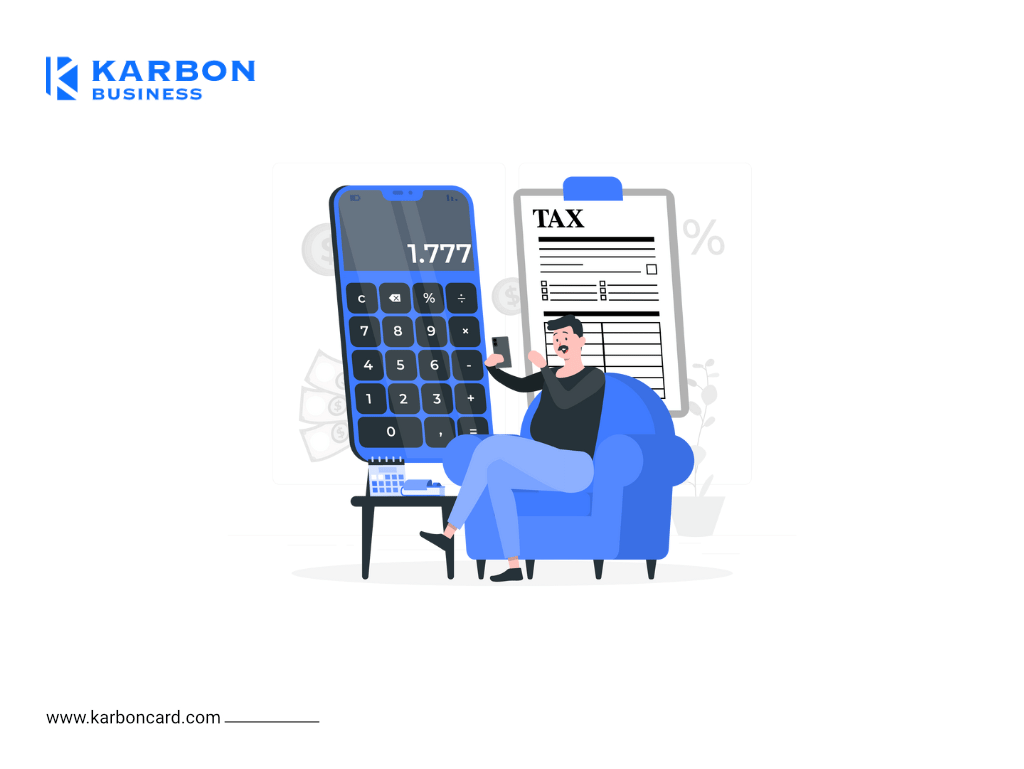Key takeaways
- Pick the right collection method for each client, bank wire for large retainers, card or link based payments for speed, marketplace payouts when you must, platforms like Karbon Business can combine flexibility with better tracking.
- Know your total cost, platform fee, card fee, incoming bank fee, intermediary bank cut, and the foreign exchange spread, ask for a full fee schedule before you start.
- Stay compliant from day one, correct purpose code, clean invoices, bank advice or eFIRC where applicable, and export documentation as your CA recommends.
- Speed comes from clean information, correct beneficiary name, complete address, accurate invoice, and a ready to share MT103 or similar proof when a client asks.
- Negotiate fees, ask your bank to waive incoming charges above a threshold, consolidate smaller invoices, avoid double conversion by charging and receiving in the same currency.
- For Indian freelancers, exports of services are typically zero rated under GST with LUT, keep proof of receipt and export documentation handy for audits.
- Karbon Business can serve as your one place to issue links or invoices, receive international payments, download remittance advice, and reconcile faster, reducing follow ups.
How international payments work
When a client abroad pays you, funds move from their bank or card network, through international rails, then to an Indian authorized dealer bank, which converts currency and credits your account. For bank transfers, this usually travels on SWIFT, and your client can share an MT103 message as proof of payment.
Key terms you will hear
- SWIFT and MT103, global messaging and a receipt like message your client can download.
- Intermediary bank, a correspondent that may deduct a routing fee.
- AD bank, your Indian bank authorized to handle foreign exchange.
- Purpose code, a mandatory code for reporting export of services, see the RBI purpose codes.
- FIRA or eFIRC, bank advice acknowledging inward remittance, your bank may issue this or an equivalent advice.
- eBRC, electronic bank realization certificate on the DGFT eBRC portal for exports, confirm with your CA if you should fetch it for services.
Pro tip: Funds are only final when they settle in your account, treat screenshots from a client as intent, not confirmation.
Choosing a payment method
No single method fits every deal. Use a mix that balances cost, speed, and client comfort.
- Bank wire on SWIFT, best for larger invoices, predictable, usually two to four business days.
- Card checkout or invoice links, fastest to collect and great client experience, but card fees apply.
- Global freelancer platforms, convenient if the client already uses them, consider withdrawal fees and currency limits.
- Specialist platforms, Wise, Payoneer, PayPal, each has unique fee models, review the fine print.
- All in one collections, platforms like Karbon Business let you create links or invoices, accept multiple methods, and reconcile in one dashboard.
Quick comparison in plain words
- Speed, card and link based flows are often same day, wires are slower but robust.
- Cost, wires have routing and FX costs, cards have percentage fees, platforms differ by currency and corridor.
- Support, when a payment is late, being able to pull an MT103 or a bank advice quickly helps close the loop.
For fee references, see PayPal merchant fees, mid market rate explained by Wise, and Payoneer fees.
Fees and exchange rates
Your real cost is the sum of several parts. Understanding each one lets you improve your net take home.
- Platform or gateway fee, a percentage, sometimes with a fixed component.
- Card network fee, applicable when clients pay by card.
- Incoming bank fee, some Indian banks charge to credit foreign funds.
- Intermediary fee, taken by a correspondent bank en route, this can be a few to several dollars.
- FX spread, the difference between the mid market rate and the rate you get, see what mid market rate means.
Example: Client pays 1,000 USD by card, card and platform 3 percent, intermediary zero, bank incoming 2 USD, FX spread about 1.5 percent, you net roughly 965 USD before conversion, then converted to INR at your bank rate.
Ask for a fee cap on large transfers, and request BEN or OUR charges upfront when the sender books a wire, to avoid unexpected cuts in transit.
Compliance checklist for Indian freelancers
- Know your regulations, read RBI FEMA resources and your bank terms.
- Correct purpose code on each receipt, align with your service category, refer to RBI purpose codes.
- Clean invoice, include your legal name, address, GSTIN if registered, description, currency, and payment due date.
- Proof of receipt, obtain bank advice or eFIRC as your bank provides, map it to the invoice.
- GST on export of services, usually zero rated with LUT, see CBIC exports under GST, consult your CA for filings.
- Bookkeeping, reconcile every receipt to an invoice, attach advice, capture fees as expense.
- Tax readiness, keep contract, scope, and correspondence, this helps in scrutiny or refunds.
This is general guidance, not tax advice, work with a CA who understands freelancer exports.
Setting up with Karbon Business, a practical walkthrough
Here is a simple flow you can mirror on most modern platforms, including Karbon Business.
- Create your account and finish KYC, keep PAN, address proof, and bank details ready.
- Add your payout bank account, current account is ideal for business activity.
- Create a client, add currency, and set invoice terms.
- Generate a payment link or invoice, include a clear service description and amount in the client currency.
- Share the link with the client, they can pay via card or bank transfer depending on what the platform supports.
- Track the status, when paid, download the remittance advice or bank confirmation.
- Reconcile, map the receipt to your invoice in your books, save the advice for your CA.
Tip: Set automated reminders for due dates, and add a friendly late fee policy, even a small percentage can encourage on time payment.
Invoices and purpose codes, what to include
A robust invoice helps payments clear faster.
- Header, your name, address, contact, and if registered, GSTIN.
- Client details, legal name, address, and email.
- Line items, describe the service, quantity or hours, rate, total.
- Currency and amount, quote in the client currency, receive in INR unless you maintain an eligible foreign currency account like EEFC, see RBI guidance in the Master Direction on Export of Goods and Services.
- Payment instructions, link or bank details, and your bank branch address.
- Purpose code, align with your service category, confirm against RBI purpose codes.
- Notes, delivery dates, acceptance criteria, and late fee policy.
Avoid ambiguity, when in doubt, add a one line scope summary that matches your contract.
Tips to reduce fees
- Ask clients to choose OUR charges on wires so sender bears routing fees.
- Batch small invoices into a monthly bill, fewer transfers reduce fixed costs.
- Avoid double conversion, quote and collect in the same currency the client holds.
- Negotiate with your bank, request a better FX margin once your volume grows.
- Use platforms that disclose the FX rate upfront, and compare with the mid market rate.
- Consider all in one solutions like Karbon Business to consolidate fees and reduce reconciliation time.
How to speed up payments
- Take a small advance at project start, twenty to thirty percent is common for new clients.
- Invoice on milestones, do not wait till the very end.
- Offer multiple payment options, card for speed, wire for large sums.
- Share your complete beneficiary details, exact name as per bank, bank address, and reference.
- When a wire is sent, ask the client for the MT103, it helps trace delays.
Polite persistence pays, schedule friendly reminders, and escalate only when needed.
Refunds and chargebacks
Understand the difference between a wire recall and a card chargeback.
- Wire recall, only possible before funds settle, both banks must cooperate, keep communication in writing.
- Card chargeback, the cardholder disputes a transaction, evidence matters, see Visa chargebacks for what is typically reviewed.
Karbon Business and similar platforms can help you attach delivery proof and scope confirmation to reduce disputes.
Common mistakes to avoid
- Using personal details that do not match your bank record, this triggers compliance checks.
- Leaving purpose code blank, banks need it to report your receipt.
- Quoting one currency, collecting in another, and absorbing double conversion without checking the math.
- Forgetting to save bank advice or eFIRC, auditors and platforms often ask for it.
- Accepting very long payment terms without late fee or partial advance.
FAQ
Which is the best way to receive international payments for freelancers in India, wire or card based links?
If your invoice is large, bank wire on SWIFT is usually cheaper per rupee because the percentage fee on cards adds up, for small invoices and quick turnarounds, link based card payments are faster and reduce back and forth. Many freelancers mix both, for example, use Karbon Business links for deposits and small milestones, and bank wires for retainers.
How can I reduce charges when a US client pays me in USD?
Ask the client to send wires with OUR charges so they bear intermediary fees, quote and collect in USD to avoid double conversion, and negotiate your bank FX margin once your volume grows. Platforms like Karbon Business can show expected FX impact upfront, helping you price better.
Do I need a current account or is a savings account fine for freelance exports?
If you operate as a business, a current account is preferred and often required by platforms and banks, some banks may allow foreign credits into a savings account for individuals, but limits can apply. For smoother reconciliations and higher limits, use a current account, Karbon Business can settle to your chosen business account.
What is a purpose code and how do I choose the right one?
A purpose code classifies the nature of your export receipt for RBI reporting, choose the code that best matches your service description, your bank form will usually show a list. When confused, read the RBI purpose codes and check with your bank or CA. Platforms like Karbon Business prompt you to select a code while creating an invoice or collecting a payment.
Is GST applicable when I work with foreign clients as a freelancer?
Exports of services are generally zero rated under GST when conditions are met, typically with a Letter of Undertaking instead of paying IGST. Keep contracts, invoices, and bank advice as proof, and review the CBIC guidance on exports. Karbon Business helps you keep receipts and invoices organized for your CA.
What is eFIRC or bank advice, do I need it for every payment?
An eFIRC or a bank advice acknowledges inward foreign remittance, many banks issue a digital advice for each receipt, keep it with your invoice for compliance and GST proof. You can usually download it from internet banking, or request it from your branch, platforms like Karbon Business make it easy to attach the advice to the corresponding invoice.
How long does an international wire take to reach my Indian account?
Typical timeline is two to four business days, it depends on cut off times, intermediary banks, compliance checks, and the accuracy of your beneficiary details. Ask for the MT103 when the client sends the wire, and share it with your bank if tracing is needed. Karbon Business can store such proofs alongside the payment for quick support.
Why did I receive less money than invoiced, where did the difference go?
Deductions come from intermediary bank fees, sender bank fees, incoming bank fees, and FX spread. To minimize gaps, request OUR charges on the sender side, negotiate your incoming fee, and compare the FX rate with the mid market rate. Platforms like Karbon Business show a breakdown so you can reconcile the shortfall quickly.
Can I keep my earnings in USD without converting to INR?
Residents can consider an Exchange Earners Foreign Currency account subject to eligibility and rules. Check your bank and the RBI Master Direction on Export of Goods and Services for the latest position. For most freelancers, converting to INR on receipt is the default, Karbon Business settles to your Indian account and keeps records for your books.
Do I need an IEC for exporting services as a freelancer?
Many service exporters operate without an Importer Exporter Code, still, some benefits or portals may expect an IEC for record keeping. Speak to your CA about whether you should obtain one for your use case, especially if you plan to use the DGFT eBRC system. Karbon Business does not require complex setup to start collecting payments.
How do I handle refunds or disputes for international clients?
For card payments, respond to chargebacks with clear proof of delivery and client acceptance, see Visa chargebacks for typical evidence. For wires, coordinate a recall via both banks if the funds are not yet settled. On Karbon Business, keep scope, milestones, and proofs attached to reduce disputes.
What documents will my CA ask for while filing taxes on foreign income?
Expect to share your invoices, bank advice or eFIRC, contract or statement of work, and a reconciliation of fees and net receipts. If you claim zero rated GST, include LUT and export proofs. Using a system like Karbon Business keeps these documents organized and easy to retrieve at year end.
Can clients pay me in INR for overseas work, or must it be in foreign currency?
For export of services, receiving in convertible foreign currency is common and clean for documentation, INR receipts from a foreign client via an overseas account can be messy for proof of export. Align with your CA and bank on acceptable modes, platforms like Karbon Business focus on clear international collections that map to purpose codes.










